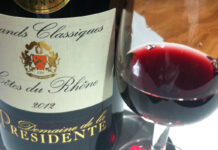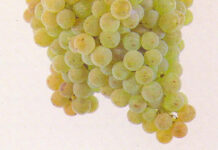Luke Richardson has worked in a range of venues across the UK, specialising in wine, and is now at Restaurant Dean Banks at The Pompadour in the Waldorf Astoria Edinburgh. In his column for SLTN he shares his thoughts on all things wine-related and answers your questions about wine. If you have a question for Luke email it to sltn@peeblesmedia.com

Hello again all!
Following on from last month’s column about add-ons to the bill in the shape of aperitifs, I thought it fitting to continue with some dessert wines to finish off that meal in the same vein – adding the little extras on to the bill to get your spend per head up. As always, good advertising of these offers – along with staff participation in selling them – will always help.
So, dessert wines… oft mismatched, oft misunderstood – but, done well, they can round off a meal really successfully. In my opinion, the best dessert wines in a restaurant environment are the higher acidity ones – they start sweet and unctuous, but finish with a clean sensation in the mouth.
So how do you know which wines are in that style? Well, it all comes down to the grape varieties used and a little about how we sense these attributes.
We can, in fact, only sense both sweetness and acidity in reflection of each other. Think of a lemon at various stages of ripeness – super tart and acidic when young and unripe (very little sensation of sweetness, so very high acid) and then more of a lemon drop flavour as it becomes more ripe (sweeter in flavour as the contrast between the sugar and acid comes more into balance). Exactly the same is true of grapes and dessert wines.
The kings of all dessert wines, in my opinion, are the wines of Jurançon in the Pyrenees – indeed, the only appellation in France for a dessert wine first and foremost – the title of its dry wines must be appended with the word “sec” to show they are not sweet. Made from the fairly obscure Petit Manseng grape variety and incredibly sweet but with very high acidity, these wines match very well with fresh fruit desserts. The old rule that the wine should be sweeter than the dessert is still true, and Jurançon can claim that for the majority of desserts. Around £16 +VAT for a bottle might sound a lot, but that’s ten good servings of 75ml, so a selling price of £6 gives a GP in the high 60s.
Another option would be the Muscat grape – but from two very specific areas: Asti in Piedmont, north west Italy; and the island of Pantelleria off the coast of Sicily.
Moscato d’Asti is a very fragrant dessert wine, particularly good with strawberries and normally fairly low in alcohol. Expect to pay anywhere north of £10 +VAT for a decent example. Passito di Pantelleria, or Zibibbo (local synonym for Muscat of Alexandria), is much richer but has a more piercing acidity and can deal with richer desserts – crème caramel, for example. These vary wildly in price, from £14 +VAT and up, but it’s the better value ones which have the lighter body and the style that I would generally recommend.
For all of these ‘white’ dessert wines, I would definitely recommend serving them as cold as possible. Warm white dessert wine really is abhorrent!
For chocolate desserts, I would look at a red sweet wine – either a Black Muscat or Banyuls or even a tawny port. Prices (and alcohol levels!) vary greatly, but £15 +VAT gets you something fairly good, and these should be served just lightly chilled.
Happy hunting!



















